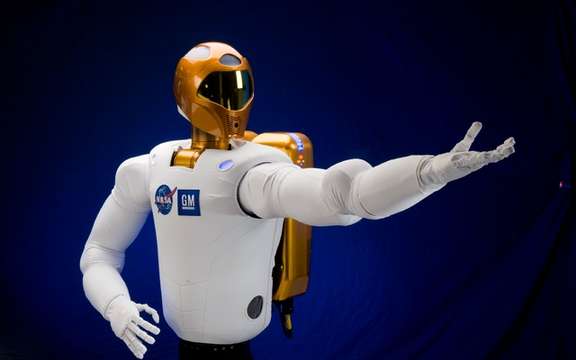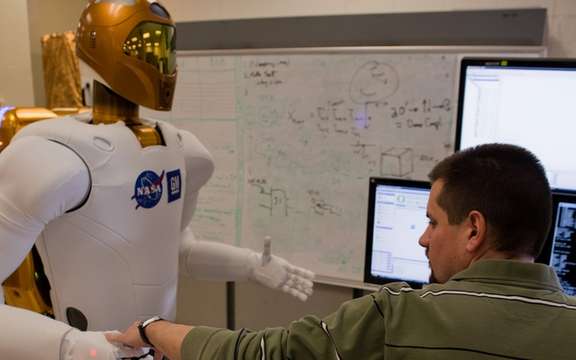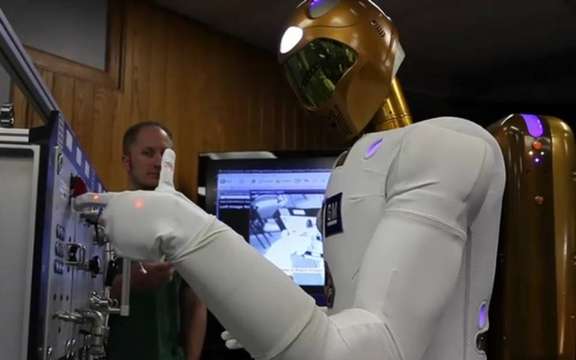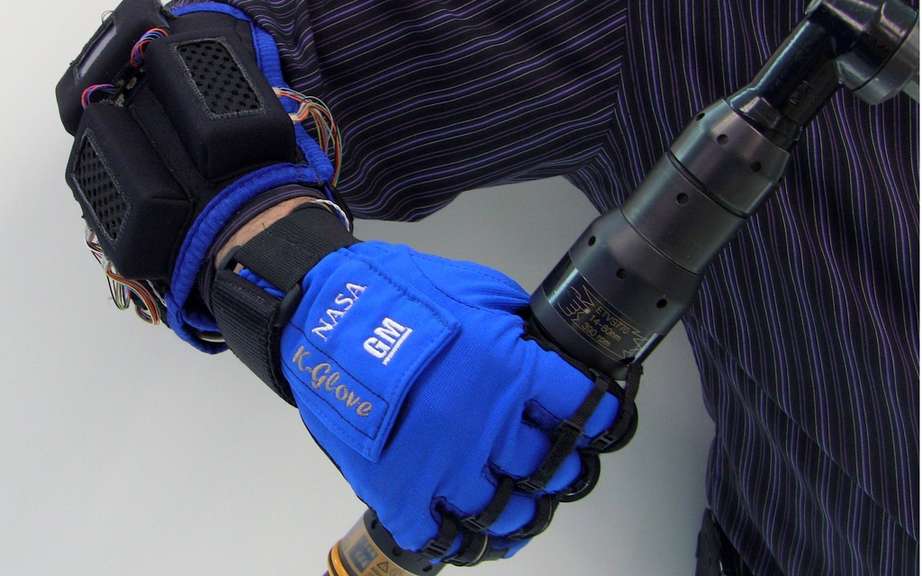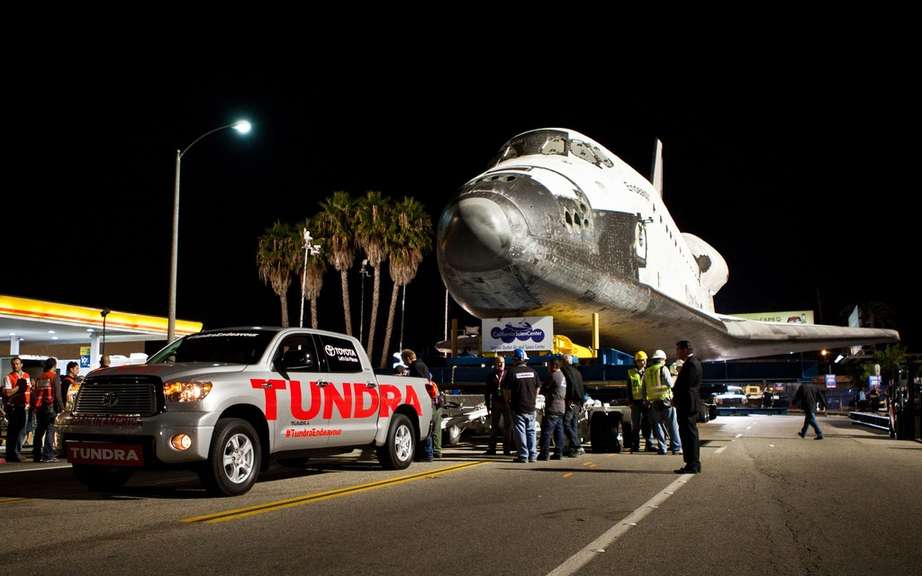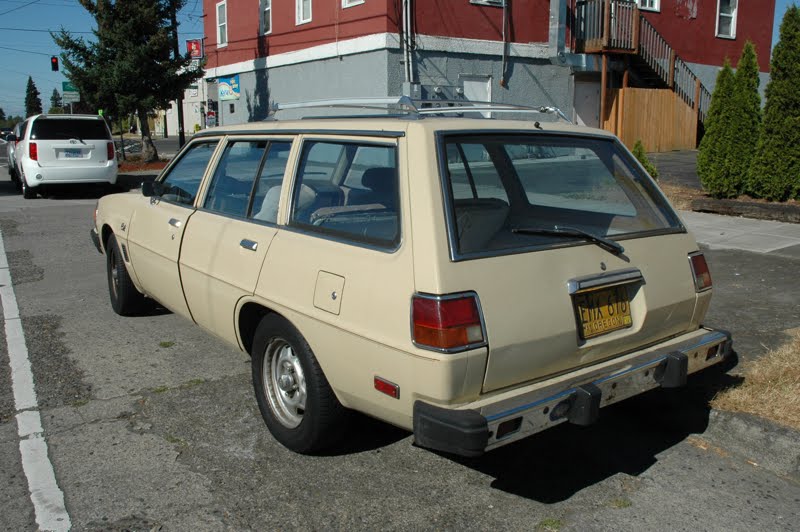GM presented Robonaut 2, the first humanoid space
Nearly 200 people from 15 different countries have visited the International Space Station, but the orbiting station has hosted so far as human crew members.
Robonaut 2, the latest generation of Robonaut, robotic assistants astronauts, is preparing to embark on the space station aboard the shuttle Discovery during the STS-133 mission. This will be the first humanoid robot in space. For now, of course, its main purpose is to show how the expert engineers robots behave in space. However, it is hoped that, thanks to advances and improvements, it could one day venture outside the station and help astronauts perform repairs and make improvements, or participate in scientific work.
R2 - this is the name of the robot - will launch a permanent inside the Multipurpose Module Leonardo, which will be filled with food and equipment to the station, and then permanently installed in the Unity section. Once R2 out of its container - probably several months after his arrival, it will work first in the Destiny laboratory for operational testing, but over time, its territory and its applications could expand. It is not expected that R2 return to earth.
Historical
Work on the first Robonaut have started in 1997. The idea was to build a humanoid robot that would be able to assist astronauts during tasks can be facilitated by a further help, or venturing to perform tasks or too dangerous for the members of the crew venture there, too mundane for they are wasting their time. The result was R1, a prototype of a robot like a human being can perform maintenance tasks or be installed on a rolling stand to explore the surface of the moon or Mars. During the year 2006 R1 was used in many experiments in a variety of environments from laboratory tests and field, which proves that the concept of a robotic assistant was valid. The same year, General Motors announced that he was interested in the subject. Team General Motors then was already working to the development of its own experts robots. After seeing that NASA had already accomplished, GM offered them to work. Agreement, the "Space Act Agreement" was signed in 2007 to allow a GM and NASA to share their resources and work together to the new generation of Robonaut.
In February 2010, R2 was unveiled - a humanoid robot faster, more skilled, more technologically advanced, all humanoid robots designed previously. Its potential was quickly recognized and he was given space on one of the last few shuttle missions for the lead up to the space station. It is there that it will be history, as the first humanoid robot in space, and it will contribute to the progress, since engineers provide a first overview of the manner in which a humanoid robot includes the absence of gravity.
The future
The first mission R2 will be on board the International Space Station. Conditions aboard the space station will provide an ideal testing ground to evaluate the work of robots elbow elbow with humans in microgravity. Once this first mission will have been completed at the inside of the station, a software updates can be made day and lower limbs added to R2 has to move and finally work on the outside, in vacuum of space. This will allow a better understanding of NASA robotic capabilities to consider future missions in deep space.
Following the evolution of a technology R2, similar robots could be sent further into space, to test the system under thermal conditions and most extreme radiation. One day, R2 could maintain communications satellites, meteorological and recognition, providing direct benefits to the Earth.
The next step for robots like R2 would be to explore near-Earth objects such as asteroids and comets, and finally, Mars and the moons of Mars. The robot will be used to scout, providing detailed samples and soil maps, and starting work on the infrastructure that astronauts might need. The team that would follow would be much better prepared for future exploration.
This development of opportunities for robotic and human exploration will be a mission to the surface of Mars. This partnership between humans and robots will enable missions to Mars to be conducted safely by a smaller team, without sacrificing the goals and results of the mission.
There is a logical progression to the next generation in space exploration. The first of a new destination is first thanks to the telescope, then through the eyes of a robotic precursor such as R2, which is finally followed by the arrival of human explorers. Humans and robots exploring the solar system together can provide much better results than they could achieve alone, paving the way for a promising future, rich in discoveries.
Characteristics
Material: Mainly aluminum and steel, and non-metallic materials.
Weight: Approximately 150 pounds
Height: about 1 meter (about the size to the head)
Shoulder width: 78.7 centimeters
Sensors: + 350 in total
Processor: PowerPC Processor 38
Axes of rotation: 42, total
Speed: Up to 2 meters per sec
How the Robonaut are they made?
A robot designed to work with humans and use human tools should look like, by default, a human being. However, the head of R2 does not contain his brain, but his vision equipment.
Neck R2 has 3 axes of rotation, allowing him to look left, right, up, or down.
Each arm is approximately 81 cm in length, giving a total R2 scale of 2.4 m.
Behind the visor R2 are four visible light cameras in two-to provide a stereoscopic vision robot and its operator, and two auxiliary cameras.
A fifth infrared camera is situated at the mouth, allowing the perception of depth.
Each arm has 7 axes of rotation and can lift 9 kg in all poses, subject to the terrestrial gravity.
On Earth and in the space station, the backpack R2 contains its system conversion of energy, allowing it to be plugged into the sector. At the surface of another planet - or on the moon or asteroid - the backpack would contain batteries of the robot.
Robonaut 2 hands possess 12 axes of rotation - thumb has 4 axes of rotation, the index and middle fingers each 3 axes of rotation, the ring and little fingers, one each. Each finger possesses a gripping force of 2.2 kg.
R2 literally thinks with his stomach. With a head full of cameras, the only space available for a brain is the torso of the robot.
Reviewed for space
R2 has been designed as a prototype intended to be used on Earth, a way to study what would be necessary to achieve a send a robot into space. However, when R2 was unveiled, the mission managers were so impressed that they decided to go further and send it to the space station - not without having PREVIOUSLY brings some improvements. The materials used for the skin have been changed to meet the most stringent criteria of the station flammability; protection has been added to reduce the electromagnetic interference; and processors have been improved to increase the radiation tolerance of the robot. The original fans were replaced with quieter fans, respecting the noise restrictions of the station, and the electrical system has been redesigned to run on DC station, rather than on the AC uses the ground.
Test preparation has space
Before being declared ready to face the rigors of spaceflight, R2 was put to the test to ensure that a robot could both support the environment and stay without damage. Tests have been made to ensure that the robot was not too loud, it did not emit electromagnetic waves that can interfere with other systems with the station, and it could work well on the of electric power station system. He also tested for vibration simulating the conditions under which it will be subjected during its launch aboard the Space Shuttle Discovery to ensure it was ready for the ride.
Work aboard the station
The main role of R2 in the space station will first experimental. The robot starts its life in space in the Destiny laboratory, or it will be subject to stains and similar operations to those already executed on Earth, allowing engineers to solve the problems posed by the operation of a humanoid robot expert in space. If R2 proves competent, the robot will evolve maybe to maintenance tasks in the station, such as vacuuming or cleaning the filters. And thanks to improvements that could allow it to operate in the vacuum of space, it may also be able to perform repairs on the outside of the station, or simply help astronauts during their work outside.
Control / Operation
The operators of R2 have several options for managing the robot. The crew of the station, and presents operators on the ground, will run R2. However, one of the improvements of R2 compared to the previous generation of Robonaut, is that it does not need constant supervision. In anticipation of a future destination in which the distance and time would pose problems for the ongoing management, R2 was designed to start spots and conduct has independent manner, with periodic status checks.
New frontiers
Wherever astronauts go or want to go, R2 be an asset. The possibilities are endless. R2 can advance their human counterparts to identify places safe and to prepare the arrival of the team. It can work side by side with the astronauts once arrived there, providing additional support for risky activities or involving loss of precious time for the crew. It can be implanted in a place, which is the original purpose of his stay in the resort. It can also be installed on a mobile base - R1 was, for a time, settled on a Segway and a chassis has four wheels. R2's legs are already under development.
View the gallery


